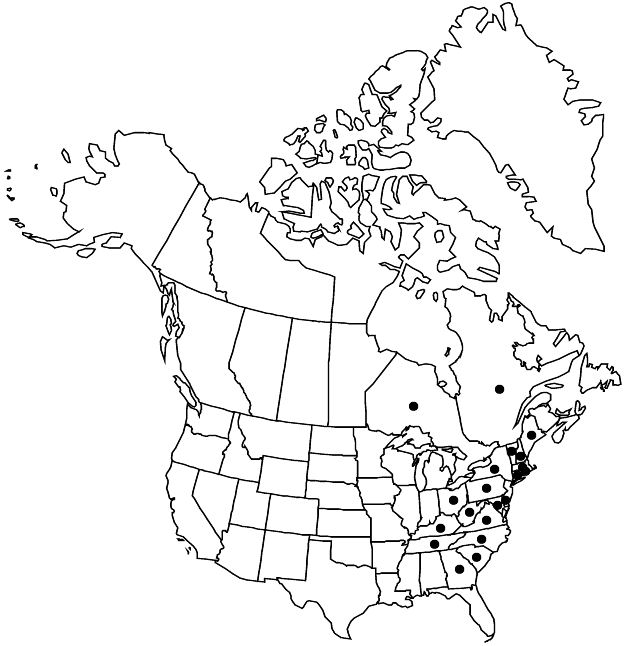Viola rotundifolia
Fl. Bor.-Amer. 2: 150. 1803.
Plants perennial, acaulescent, not stoloniferous, 1–20 cm; rhizome thick, fleshy. Leaves basal, 2–5, prostrate to ascending, often overlapping basally; stipules linear-lanceolate, margins entire, apex acute; petiole 2–8 cm, pubescent; blade unlobed, orbiculate, reniform, or ovate, 2–12 × 1.5–9 cm, base cordate, margins crenate to serrate, sometimes glandular, ciliate or eciliate, apex rounded to acute, surfaces usually pubescent throughout or concentrated proximally on both surfaces. Peduncles 1.5–7 cm, usually pubescent. Flowers: sepals lanceolate to ovate, margins ciliate or eciliate, auricles 0.5–1 mm; petals deep lemon-yellow on both surfaces, lower 3 brownish purple-veined, lateral 2 bearded, lowest 8–11 mm, spur yellow, gibbous, 1–2 mm; style head beardless; cleistogamous flowers on prostrate or partially subterranean rhizomes or on racemelike, nonrooting, and usually leafless branches growing from rhizome apex. Capsules ellipsoid, 5–10 mm, glabrous. Seeds beige, 1–2 mm. 2n = 12.
Phenology: Flowering Mar–May.
Habitat: Rich montane forests and other mesic woodlands
Elevation: 200–2000 m
Distribution

Ont., Que., Conn., Del., Ga., Ky., Maine, Md., Mass., N.H., N.Y., N.C., Ohio, Pa., R.I., S.C., Tenn., Vt., Va., W.Va.
Discussion
N. H. Russell (1955b) stated that Viola rotundifolia is a primitive member of Viola and probably one of the ancestral species of stemmed yellow violets of North America. Russell (1965) stated that morphologically, V. rotundifolia is one of the most invariable violets and suggested that its nearest relative is V. orbiculata.
Selected References
None.
